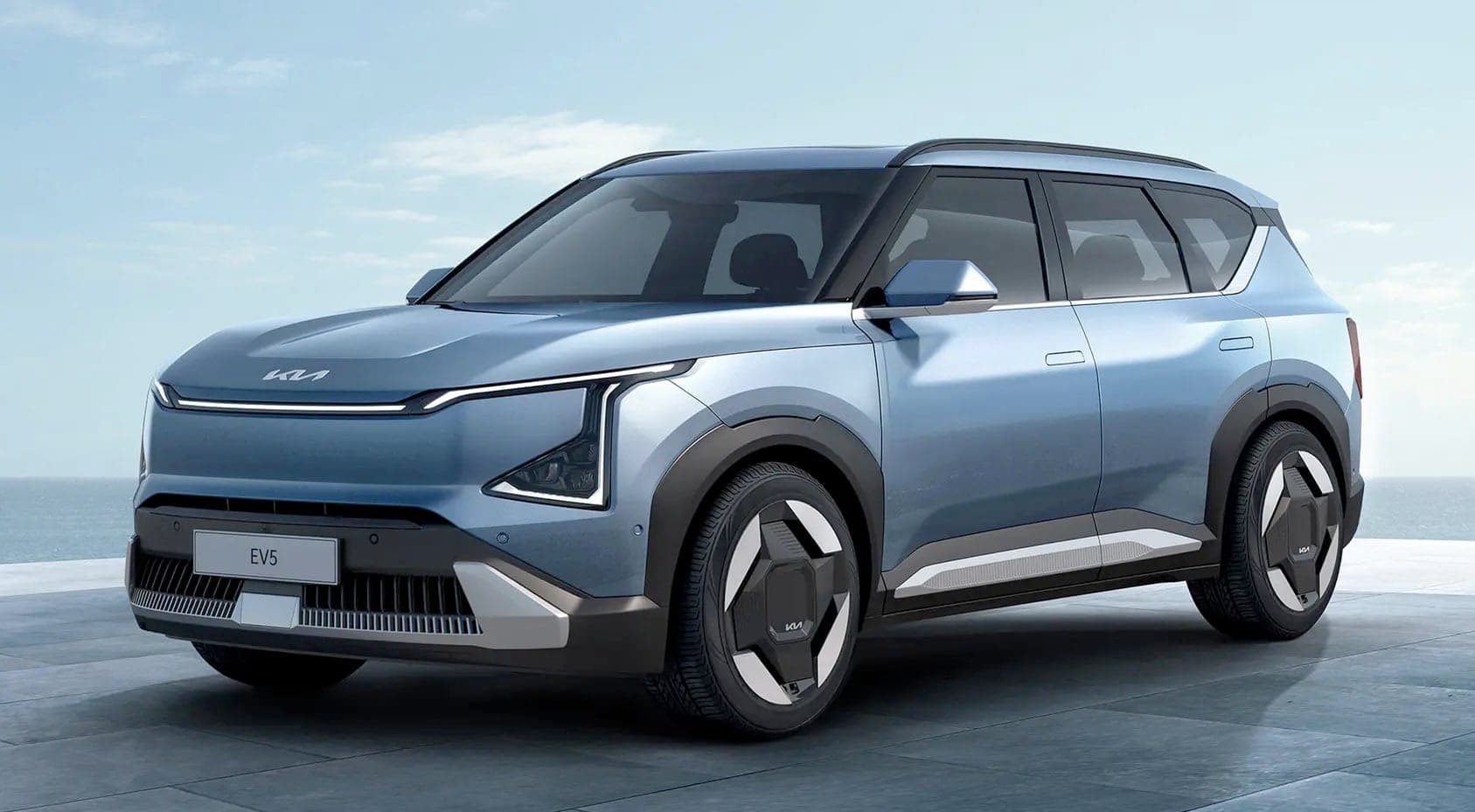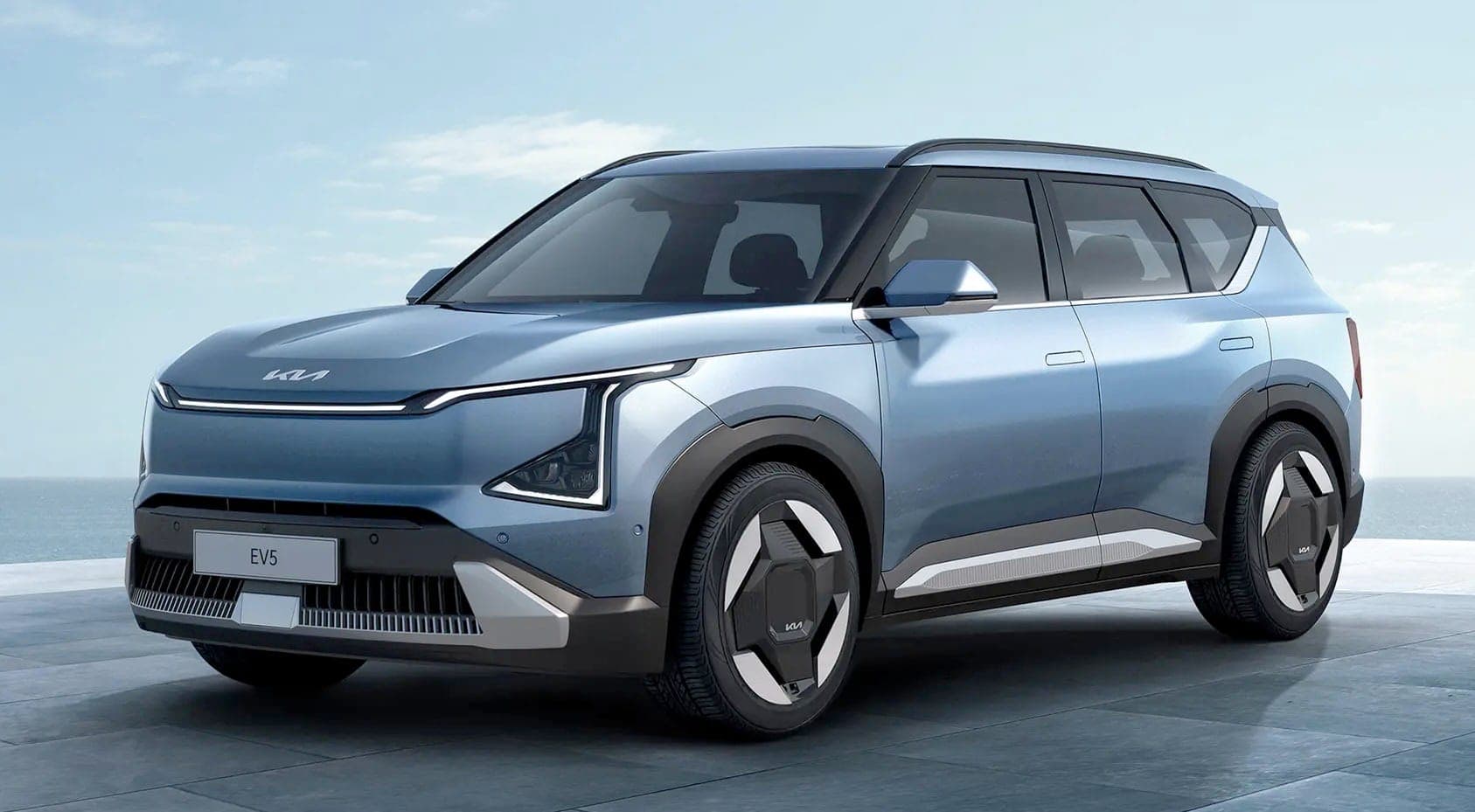Kia EV5

Price Range
$67,990 - $85,450
Range (WLTP)
470 - 555 km
Battery Size
88.1 kWh
Variants
Performance
0-100 km/h
8.9 sTotal Power
160 kWTorque
310 NmTop Speed
185 km/hDrive
FWDRange & Efficiency
WLTP Range
555 kmWLTP Consumption
180 Wh/kmHighway Range
433 kmYour Real Range
Calculate Battery & Charging
Battery (nominal)
88.1 kWhBattery (usable)
84 kWhBattery type
LFPAC Charging
11 kWDC Charging
141 kWVehicle-to-Load (V2L)
NoDimensions & Weight
Length
4615 mmWidth
1875 mmHeight
1715 mmGround Clearance
161 mmWeight
2054 kgShape
Medium SUVSeats
5Storage & Towing
Boot Space
513 LBoot Space (Max)
1713 LFrunk
67 LTowing (Braked)
1250 kgTowing (Unbraked)
750 kgKia EV5 Review
How many Kia EV5 have been sold in NZ?
There have been 299 registered to date (all NZ new).
Kia EV5 registrations
Monthly units (includes new and used import)

